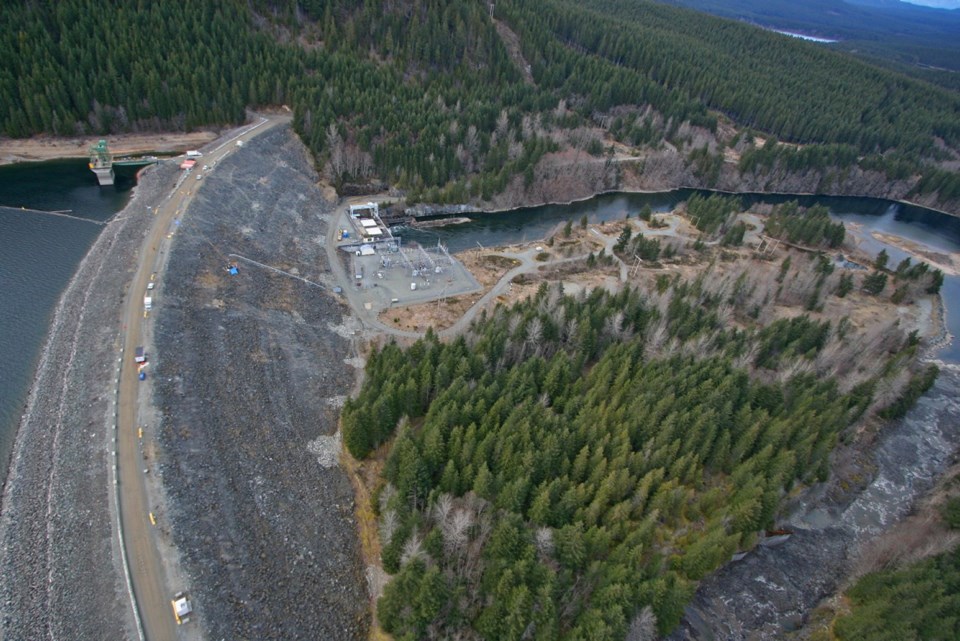The government-funded construction boom on northern Vancouver Island will continue under plans being developed by B.C. Hydro.
While costs are not finalized, Hydro is aiming to invest in major infrastructure projects near Campbell River beyond the
$1.093 billion already allocated for the new John Hart Generating Station replacement project, which is under construction.
Future work includes plans to seismically upgrade dams on the Campbell River water system, expand an existing substation and improve other key pieces of infrastructure.
“The context for this is that B.C. Hydro is currently spending about $2.4 billion a year on capital,” said Energy Minister Bill Bennett. That figure includes the contentious Site C hydroelectric dam in northeast B.C.
“There was a period of time back in the 1990s when there was very little investment made in infrastructure,” Bennett said.
Dams, generating stations, turbines and transmission and distribution lines “have all gotten older so there is a need to upgrade all of this infrastructure,” he said.
Hydro has a total of 572 capital projects underway, Bennett said.
The John Hart Generating Station project has 245 people on the job, he said.
Also under construction is the North Island hospitals project. A $331.7-million hospital is being built in Courtenay and a
$274.5-million hospital is going up in Campbell River.
Hydro’s plans will provide contracts to the construction sector and create jobs on the north part of the Island, even after the generating station is finished.
Work is beginning on a $30-million Hydro substation upgrading project in Campbell River, Bennett said.
That project will add another transformer and four circuits or feeders to the existing station. This will allow it to supply more power as single-family and multi-family housing is being developed.
The substation work is expected to be finished by fall 2017, B.C. Hydro spokesman Stephen Watson said.
Deborah Sargent, Campbell River chief administrative officer, said that this and other Hydro projects are “preparing Campbell River for the 21st century in terms of the substation upgrade and ensuring we have sufficient power as our city grows — and it is growing.”
Hydro is eyeing two main upgrading projects to its John Hart Dam and its Strathcona Dam on the Campbell River. The projects are contingent on funding approval from Hydro’s board of directors and approval from the B.C. Utilities Commission.
Dam improvements would include seismically strengthening spillway gates to ensure they would survive a one-in-10,000-year earthquake, Watson said.
In the event of an earthquake, the goal is to lower the reservoir as safely as possible to reduce pressure on the dam.
Rebuilding the 810-metre-long earth-and-concrete John Hart Dam would begin after the generating station project is complete, Watson said. Work would probably start in summer 2019 and run for three years, generating jobs for hundreds of workers.
The dam’s design is expected to be ready next spring, with an application going to the utilities commission in fall 2018, he said.
Improvements to the Strathcona Dam, which is about half a kilometre long, would follow, but plans are not as advanced as the John Hart Dam.
This project might start about 2020 and last a number of years, Watson said. Hydro would then look at upgrading the dam and eventually replace its power house.
The Ladore Dam, also on this water system, is in line for seismic upgrading of its three spillway gates. The work will likely cost tens of millions of dollars and start about 2018, Watson said.
Hydro’s agenda calls for a three-part project to improve the Salmon River diversion canal. A more efficient fish ladder is planned, with work starting this spring.
The concrete canal is to be upgraded in 2017, and an improved system to help salmon and steelhead return to the ocean is slated for 2018.



